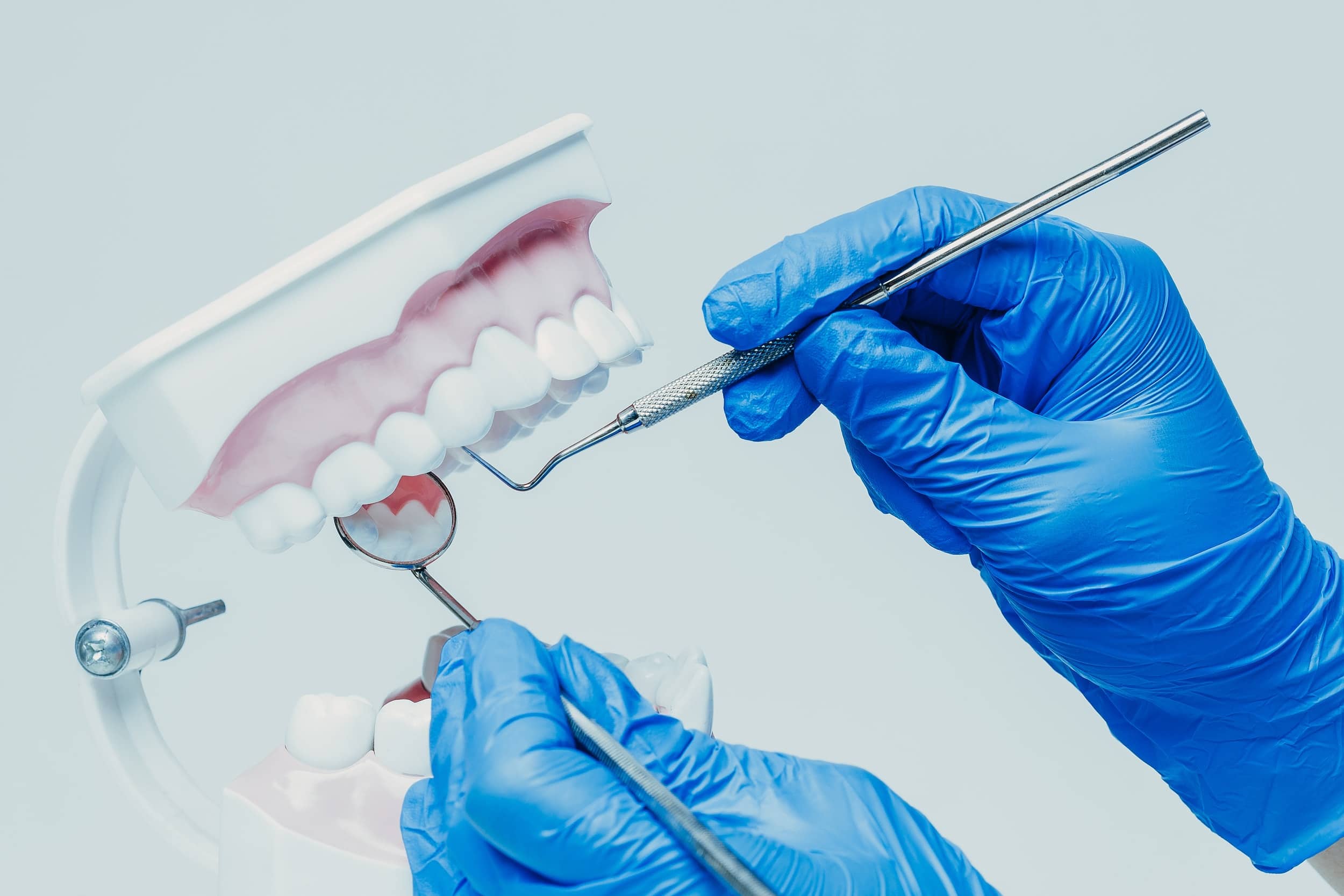Dental Implants
A dental implant is a complete tooth replacement from the root to tip. The difference is that the tooth is artificial but looks and feels very natural. The root itself is made from a strong, sustainable material. Usually, the root is made from high-quality titanium. The actual tooth is a porcelain crown which we now have the ability to create right in our Danbury office.
The initial process only involves implanting the root. As it bonds to the bone and heals underneath the gums, the second procedure requires opening the gum and inserting the crown. The amount of time it takes to get a successful dental implant can be several months.
Dental implants by a Danbury dentist are complex and somewhat expensive procedures. However, at Rolling Hills Dentistry, we offer many payment options to ensure you get the smile you deserve. Ask your dental implant dentist if you qualify for a dental implant procedure. If you lead a healthy lifestyle and take care of your teeth, they can last very long. In fact, it’s the closest replacement to a natural tooth.
Dental implants have many advantages over other restorative options like removable dentures or dental bridges. Since the implant is secured in the jaw bone, bone growth is stimulated which helps to maintain the structure of your jaw for appearance and tooth stability. This is crucial in order to maintain the integrity of the implant so it can last for years!
Dental Bridges
The second alternative comes in the form of dental bridges. Dental bridges are a permanent solution for replacing one or more missing teeth. There are several different types of bridges, but the most common use the existing teeth to support bridgework that holds an artificial tooth or teeth in place
There are three types of bridges available, and the artificial teeth are called pontics. In order to utilize a bridge, there must be sufficient natural teeth, crowns or implants to serve as an anchor for the pontic. The purpose of the bridge is to restore your bite along with filling in the missing gaps.
Talking and eating with bridges take some getting used to. For the most part bridges do an ample job of replacing missing teeth. Bridges are expected to last for about 8 to 10 years on average. Insufficient care can decrease the time while extra care can increase it.
Traditional Bridge
Traditional bridges consist of a false tooth or teeth that are held by dental crowns that have been anchored down to abutment teeth. This tends to be the most popular type of dental bridge and is used when you have a gap between two natural teeth. A Traditional bridge requires that you have two remaining teeth on either side of your missing tooth gap.
Implant-Supported Bridge
Implant-supported bridges use dental implants to secure a bridge in place. Unlike the other options, dental crowns are not used. Usually, an implant is placed for each missing tooth and then it supports the dental bridge. This process can take a couple of months since it is a multistep dental procedure. First, a cosmetic dentist will place the implant into the jaw bone and then the bridge will be placed at a later date.
Cantilever Bridge
A cantilever bridge is similar to a traditional bridge. The main difference is you only need a dental crown on one anchor tooth. Unlike a traditional bridge, you only need one tooth next to the missing tooth gap. The bridge then attaches to the surrounding teeth.
Dentures (are removable teeth)
Dentures are usually the last and most cost-effective solution. Dentures can either replace all your teeth or just certain sections, but thanks to modern dentistry more people are choosing between the above options.
After the dentist makes an impression of your bite, the records are sent to a lab, and the dentures are custom made for you. However, due to the bone loss after an extraction has taken place dentures will need to be reclined after some time.
Dentures tend to move around, and they have to be taken out for cleaning. In some cases, food can get stuck in between the dentures and the gums.
There is potential for dentures to break, become uncomfortable and in some cases damage the gums when not properly maintained by a dentist. But if your budget only allows this option it’s better than leaving big gaps in your mouth.
Conclusion
Dental implants at Rolling Hills Dentistry are by far the best option to go with because of their natural look and feel in addition to lasting very long. Bridges are the best alternative if you can’t have dental implants. The best way to know what option will suit you the best is to speak to your dentist and let him/her steer you in the right direction.



